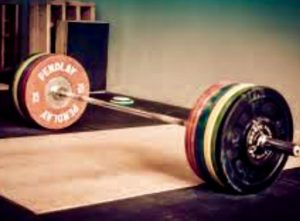Varicose veins are unsightly, and they can make your legs throb and ache. They typically appear on your legs due to force of gravity and the pressure of our body weight. Our leg veins have the job of moving blood from the bottom of our body up to the heart, and if the valves in those veins malfunction or become weakened, they don’t do their job efficiently. As a result blood can pool in our legs, and the veins become stretched and may leak or protrude.
And varicose veins can cause other problems. Check out what happens when you ignore these veins.
Left untreated, varicose veins can cause you plenty of problems. Some of the most serious include:
1. Clots. Because your blood sits without circulating, varicose veins increase your risk for blood clots. And blood clots can be dangerous, especially in the deep veins of your legs (deep vein thrombosis, or DVT.) And DVT is a medical emergency, because the clot could break free and make its way into your lungs (pulmonary embolism.)
2. Bleeding episodes. Varicose veins may start bleeding—either with or without an injury. In fact, for older individuals, even a slight bump of your varicose veins could trigger bleeding.
3. Ulcers. When you have varicose veins, your surrounding skin may be inflamed—this happens if your skin’s small blood vessels sustain damage. Once that damage occurs, your reduced circulation brings less oxygen-rich blood to the damaged skin, slowing its healing time. And if months pass without healing, it’s a sign you’ve got an ulcer, a condition which could put your entire limb in danger of amputation.
Fortunately, there are steps you can take to reduce the risk of developing varicose veins. Try incorporating one (or more) of these habits into your daily routine to enjoy maximum protection!

You don't need to start a major lifting program. Even moderate exercise can help prevent varicose veins!
Walking, biking, and swimming are excellent ways to improve circulation, especially in the legs. You don’t have to join a gym and lift weights to prevent varicose veins from forming. Even 20 minutes of walking, just twice a week, will make a difference in your leg strength and reduce your chances of developing varicose veins.
If you are really serious about preventing varicose veins, it's time to make some changes at each meal. You don't have to go on a drastic diet, just make adjustments like reducing your salt intake and adding in some high fiber foods. Swap white breads and pastas for whole wheat options. The fiber will help minimize constipation, which can contribute to the development of varicose veins, and lower sodium levels will help reduce swelling in the body. Discontinue or reduce processed sugar products as sugar puts stress on your vascular system.
Fresh fruits like blackberries, apples, apricots and grapes are especially healthy choices. You may also want to consider taking a Vitamin E supplement to help prevent blood clots.
Women are 50% more likely to develop varicose veins than men, so they must be especially cautious when it comes to clothing choices. Here are a few ways you can prevent your clothes from impacting your vein health:
If you sit at a desk all day for work, get up and move regularly. If you stand while you work, shift your weight from one leg to the other. Sitting or standing too long in one position can encourage blood pooling in the legs. Flex and bend your legs regularly to keep the blood circulating.
Sit up straight and void crossing your legs, especially for long periods of time. The National Heart and Lung Institute says that sitting at a desk or anywhere with poor posture, like leaning your head forward (as many do), increases the risk for varicose veins, and many believe that leg crossing is a risk factor for developing varicose veins.s
Elevate your legs above your heart when you return home at night, or several times a day if you are more sedentary. Use a few pillows or a larger stuffed object.
And remember: not all varicose veins can be prevented, but you can certainly reduce your chances of developing new ones or making existing veins worse in appearance.

Scheduling
Please contact our dedicated specialists to schedule a consultation today.
2024 Texas Endovascular. All rights reserved. Website Design by Healthcare Success